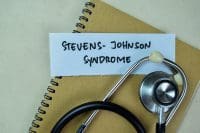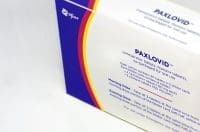A patient-centered approach can improve outcomes.
Takeaways:
- Medication reconciliation discrepancies are common among older patients.
- Accurate medication reconciliation can help preserve a patient’s functionality.
- Strategies for improving medication reconciliation include creating multidisciplinary teams, keeping detailed records, and working with information technology to create appropriate electronic health record features.
Claire Russo* is 76 years old and lives at home alone. She has a history of uncontrolled type 2 diabetes, obesity with a BMI of 35, hyperlipidemia, stage 4 chronic kidney disease, overactive bladder, depression, gastroesophageal reflux disease, hypertension, hypothyroidism, osteoporosis, vitamin D deficiency, and chronic pain. She has an abnormal gait resulting from a leg injury caused by a fall 15 years ago. Since then, she has been using a cane and takes chronic pain medications. Ms. Russo has been a widow for 5 years but has the support of her daughter who lives nearby.
When the nurse practitioner (NP) visits, Ms. Russo appears well with no acute distress. She’s appropriately dressed and groomed, and her single-family home is tidy. Ms. Russo is awake, alert, and oriented and maintains conversation appropriately. She’s eager for the visit but takes the first 10 minutes to collect her 16 medications from various locations throughout the house.
The purpose of the visit is routine, with an additional concern about dysuria. Ms. Russo insists on empiric antibiotic treatment because she’s had similar symptoms in the past when she had a urinary tract infection (UTI).
Given Ms. Russo’s complex medication regimen, geriatric status, multimorbidity, and polypharmacy, what should the NP consider before prescribing a new medication?
Understanding a complex issue
Let’s take a step back and review some important concepts and definitions related to medication reconciliation for older adults. The American Geriatrics Society (AGS) defines geriatric patients as those 65 years or older. They comprise 14% of the population and purchase 33% of prescription drugs. The AGS predicts that this group will increase to 25% of the population and 50% of the prescription drug consumers by 2040.
Multimorbidity is typically defined as having two or more chronic diseases. We know that as a population ages, multimorbidity increases, which also can increase pharmaceutical intervention. Polypharmacy is commonly defined as five or more medications, although the definition varies. Many homebound patients are older and chronically ill and usually meet the criteria of both multimorbidity and polypharmacy.
Increased age frequently is viewed as the most common risk factor for drug therapy problems (that is, any medication-related adverse event or potential interference in obtaining optimal patient outcomes). Drug therapy problems include nonadherence, taking medication incorrectly, or unintentional overdose. The World Health Organization, The Joint Commission, and the U.S. Department of Health & Human Services’ Office of Disease Prevention and Health Promotion, are just a few of the organizations that call for action to reduce drug therapy problems.
Medication reconciliation can be complex. It requires the healthcare professional to assess discharge paperwork, office records, and pharmacy records, and then compare them with what the patient is actually taking (including over-the-counter, nutraceutical, and prescribed medications). The goal is to resolve any discrepancies, although the process isn’t straightforward and doesn’t have one unified framework. Variables to consider include patient expectations and goals.
Medication reconciliation steps
In 2016, Rose and colleagues reported some type of medication reconciliation discrepancy in 94% of geriatric patients. In addition to providing a complete list of a patient’s medications, accurate medication reconciliation can ultimately preserve the patient’s functionality. Ideally, medication reconciliation should be performed after any transition of care, with every annual visit, and with each patient encounter.
Many options in the health system aim to improve medication reconciliation and patient outcomes. They include creating interdisciplinary teams with a pharmacist, occupational therapist, or physical therapist; keeping detailed records to improve accuracy; and working with the information technology team to add appropriate electronic health record features, such as prescription price transparency and pharmacy record autopopulation. But improving medication reconciliation and adherence isn’t just a systems issue. As a frontline healthcare professional, you can take steps to minimize drug therapy problems.
No universal clinical practice guidelines exist for medication reconciliation, especially in the home setting. Based on personal experience, input from fellow practitioners, and evidence-based literature reviews, I developed steps that comprehensively encompass the medication reconciliation process. (See 14 steps to medication reconciliation.)
14 steps to medication reconciliation
These medication reconciliation steps provide a comprehensive method for collecting data and determining the accuracy of the medications the patient is (or perhaps is not) taking.
- To save time, ask the patient to have all of their medications readily available at the appointment time.
- Start the process by assessing the patient’s perspectives and goals about their medications.
- Ask the patient to show you all of their medications, including over-the-counter drugs, herbs, supplements, creams, inhalers, and as-needed medications.
- Gather information from additional resources, such as hospital discharge paperwork, assisted living facility records, provider records, and the patient’s pharmacy.
- Compare each prescription bottle to the medication recorded in the provider record.
- Look for any high-risk medications, especially those on the American Geriatrics Society Beers Criteria® list, such as opioids, hypoglycemics, and anticoagulants.
- Assess for any medication duplication, drug-to-drug interactions, or drug-to-disease interactions.
- Ask the patient if they’re taking the medication as prescribed. If not, ask them what barriers they’re encountering.
- Ask them how they dispense the medication to themselves (for example, filling a 7-day pill container, taking each dose from the bottle). Work with the patient to find a dispensing method that facilitates adherence.
- Assess the patient’s medication use by asking about each medication’s indication and their response to it.
- Discuss risks, benefits, and side effects of each medication.
- Eliminate any unnecessary medications and discuss safe disposal options.
- Assess the patient’s willingness to take the medication, its affordability, and whether the regimen is realistic. Conclude with a plan that will enable the patient to take medications as prescribed.
- Assess the patient’s ambulatory status and dexterity to determine the need for physical or occupational therapy.
Breaking barriers
Geriatric homebound patients may face barriers to medication management, such as cognitive impairment, caregivers who work other jobs, or task-intensive regimens that create adherence hurdles. To address these barriers, you’ll need to communicate effectively, assess the patient’s cognition, and consider medication feasibility.
Communicate effectively
Some medication adherence issues can be addressed by taking a patient-centered communication approach, using the teach-back method, communicating at the patient’s health literacy level, and addressing sensory deficits.
Patient-centered communication. The Agency for Healthcare Research and Quality (AHRQ) lists patient-centered care as one of the six dimensions of healthcare quality. On your next visit, have a focused conversation with your patient and their caregivers.
Elements of patient-centered conversations include open-ended questions, asking about the patient’s perspective, empathizing with their feelings, and summarizing the conversation. Pay attention to nonverbal communication, and show you’re listening by making eye contact, leaning forward, and nodding. Don’t interrupt the patient or caregiver, and allow for silent pauses.
Empowering patients to control their decisions may help them feel more comfortable and give you more insight into their medication regimen. For example, if patients don’t want to change their long-term opioid pain medication, explore their concerns. Explain the risks and alternative options and discuss how a slow-weaning protocol may create a safer pain medication management plan.
Teach-back process. This well-established method helps ensure patients understand what a healthcare professional has discussed with them. The AHRQ provides information that anyone can use (https://bit.ly/3v2YeBx). Use the teach-back process when you start, discontinue, adjust, or review medications.
Tell patients that you’re going to explain the current, changed, new, or discontinued medication. Don’t overload them with new information, and keep it to no more than four key points. Start with the most important point, and use plain language. Ask patients to explain the information back to you in their own words to ensure they understand. If they miss any of the points, re-explain and have them tell you again until you’re sure they comprehend.
Communicate at the patient’s health literacy level. The focus on health literacy has helped healthcare providers communicate with patients so that information is processed and understood. Clearly communicating at the patient’s literacy level empowers them to make appropriate healthcare decisions. To assess general literacy, ask the patient to read their prescription bottles to you. (See Health literacy resources.)

Health literacy resources
Tap into these resources to help improve patients’ health literacy.
- Centers for Disease Control and Prevention
cdc.gov/healthliteracy/index.html
- Health Resources and Services Administration
hrsa.gov/about/organization/bureaus/ohe/health-literacy/index.html
- National Institutes of Health
nih.gov/institutes-nih/nih-office-director/office-communications-public-liaison/clear-communication/health-literacy
Consider implementing these strategies to improve a patient’s health literacy:
- Speak in simple language, and avoid medical jargon. For example, instead of saying “hypertension,” say “high blood pressure.”
- Use alternative methods of providing information, such as videos or pictures. During home visits, share resources on a mobile device.
- Provide easy-to-read patient education materials written in a large font at a third-grade reading level.
- Ask open-ended rather than yes or no questions. Sometimes a patient agrees without fully understanding what they’re being asked.
Address sensory deficits. Hearing and vision deficits are common among older adults. If a patient can’t hear the discussion about how and why they’re taking a medication, adherence may diminish. Take steps to help the patient get the medical care to address these deficits.
If a patient has a hearing impairment, make sure they have their hearing aids in place, reduce background noise (for example, turn off the television or close windows), and write out instructions. Speak clearly and slowly without shouting, and make good eye contact to show your interest; this also allows the patient to see your face and lips.
If a patient has poor eyesight, ensure adequate lighting, have a magnifying glass available, or request assistance from a family member.
Assess cognition
Patients with cognitive impairments may take their medication in error but insist they’re taking it correctly, or they may be in jeopardy of making medication errors with high-risk, but necessary, medications. In this situation, medication safety must be addressed with the patient’s family or caregiver.
Some patients with cognitive impairment may require a higher level of support for medication supervision, such as assisted living. However, giving up their autonomy can be a sensitive issue. If a patient is reluctant, consider conducting a mini-trial with different dispensing methods, such as morning and evening pill packages prepared by the pharmacy, an automated pill-dispensing device, 7-day pill containers, or technology-assisted reminders. This approach provides an objective assessment of the patient’s ability to safely and independently take medications. The conversation about alternative medication administration may take several visits to gain buy-in from the patient and their family. Think of the conversation as a process.
Consider feasibility
Assess whether the prescribed medication is feasible for patients. For example, if they need to take furosemide for heart failure but have incontinence and immobility, they may be unwilling to take the diuretic. The furosemide timing may need to be adjusted, or strict fluid restriction might be a better answer.
Ms. Russo
After completing Ms. Russo’s medication reconciliation, the NP considers what empiric antibiotic to prescribe for the dysuria, which is presumed to be a simple UTI. Ms. Russo hasn’t had a fever, flank pain, or any evidence of systemic illness. The NP reviews the patient’s allergy list and renal function. Ms. Russo isn’t allergic to any medications. However, she does have stage 4 chronic kidney disease, which means nitrofurantoin isn’t an option. The AGS Beers Criteria® reinforce that assessment.
The NP plans to prescribe fosfomycin because it doesn’t affect the kidneys, but after a patient-centered conversation she determines that Ms. Russo can’t afford the $100 expense. Instead, the NP chooses amoxicillin, which is $3.64 with a prescription coupon. Ms. Russo agrees and takes the medication as prescribed. The dysuria and presumed UTI resolve.
Without a thorough medication reconciliation and patient-centered conversation, the NP might not have identified that Ms. Russo is taking lisinopril for her hypertension and diabetes and might have prescribed trimethoprim-sulfamethoxazole. Using this drug combination with stage 4 chronic kidney disease poses an increased risk for hyperkalemia. And if the NP prescribed fosfomycin without discussing feasibility with the patient, Ms. Russo might not have taken the medication due to cost. In that scenario, the UTI wouldn’t have been treated, and the patient might have developed sepsis and required hospitalization.
Improve outcomes
Geriatric medication management in the home is a complex and dynamic process. Taking a patient-centered communication approach, assessing patient cognition, and addressing medication feasibility during medication reconciliation can ultimately improve patient outcomes, functionality, and quality of life.
*Name is fictitious.
Kate Taylor is an assistant professor in the department of geriatrics at University of North Texas Health Science Center and clinical executive at SaferCare Texas in Fort Worth.
References
2019 American Geriatrics Society Beers Criteria® Update Expert Panel. American Geriatrics Society 2019 Updated AGS Beers Criteria® for potentially inappropriate medication use in older adults. J Am Geriatr Soc.2019;67(4):674-94. doi:10.1111/jgs.15767
Agency for Healthcare Research and Quality. Six domains of health care quality. November 2018. ahrq.gov/talkingquality/measures/six-domains.html
Doucette WR, Vinel S, Pennathur P. Initial development of the Systems Approach to Home Medication Management (SAHMM) model. Res Social Adm Pharm. 2017;13(1):39-47. doi:10.1016/j.sapharm.2015.12.013
Fink JLW. 7 strategies to improve medication reconciliation. Medscape. September 7, 2018. medscape.com/viewarticle/901315
GeriatricCareOnline.org. GRS teaching slides. 2016. geriatricscareonline.org/ProductAbstract/grs-teaching-slides/S001
Institute for Healthcare Improvement. Tools: Always use teach back!ihi.org/resources/Pages/Tools/AlwaysUseTeachBack!.aspx
Institute for Healthcare Improvement. Tools: MATCH medication reconciliation toolkit. ihi.org/resources/Pages/Tools/MATCHMedicationReconciliationToolkit.aspx
Institute of Healthcare Improvement. WIHI: Health literacy: New skills for health professionals. November 17, 2011. ihi.org/resources/Pages/AudioandVideo/WIHIHealthLiteracy.aspx
Patient Safety Network. Patient safety primer: Medication errors and adverse drug events. September 2019.psnet.ahrq.gov/primer/medication-errors-and-adverse-drug-events
Patient Safety Network. Patient safety primer: Medication reconciliation. September 2019.psnet.ahrq.gov/primer/medication-reconciliation
Rose O, Jaehde U, Köberlein-Neu J. Discrepancies between home medication and patient documentation in primary care. Res Social Adm Pharm. 2018;14(4):340-6. doi:10.1016/j.sapharm.2017.04.003
Steele KM, Ruisinger JF, Bates J, Prohaska ES, Melton BL, Hipp S. Home-based comprehensive medication reviews: Pharmacist’s impact on drug therapy problems in geriatric patients. Consult Pharm.2016;31(10):598-605. doi:10.4140/TCP.n.2016.598


















